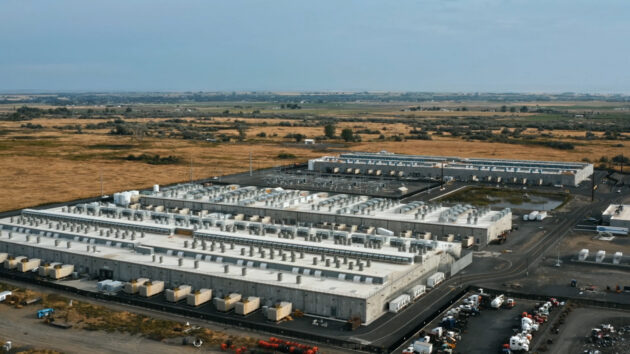Can tech companies’ appetite for more energy-hungry data centers coexist with the Pacific Northwest’s ambitious climate goals?
Researchers at Sightline Institute, a Seattle-based think tank, say it’s possible.
A new report titled “A Climate Hawk’s Guide to Northwest Data Centers” explores regulations and predicts how growing power demand from data centers, as well as electric vehicles and other electrification efforts, could impact the region.
Key findings include:
- Oregon and Washington laws prevent new coal or natural gas plants from being built, but demand could delay the retirement of the 17 gas plants operating in the two states.
- Neighboring states without stringent energy laws, such as Idaho and Montana, could decide to build new fossil fuel power plants to meet growing demand. The data centers could claim the clean energy that the states produce, leaving dirtier power for other sectors.
Washington and Oregon as well as data center giants Amazon, Microsoft, Google and Meta are aligned in working toward ambitious carbon reduction targets. But state budget shortfalls, economic pressures and shareholder demands complicate progress in meeting those goals.
The two West Coast states are each already home to more than 100 data centers. In Oregon, the computing muscle behind cloud services gobbles 11.4% of the state’s energy production, while the centers consume 5.7% of the power produced in Washington, the report states.
Portland and Eastern Oregon rank second in U.S. data center capacity, trailing Virginia, which is billed as the world’s largest data center hub.
And data center growth continues.
The surge is driven by growing demand for artificial intelligence, which requires extensive computing power. While some tech companies have tempered their expansion projections, more energy-intensive facilities are on the horizon.
Sightline, a nonpartisan nonprofit that promotes clean power use, suggests strategies that allow for data center expansion while bringing new renewable energy sources online.
“[T]ech companies, with their deep pockets and corporate climate commitments, alongside their eagerness to ensure a robust energy supply to power their business plans, may be ideal underwriters of Oregon and Washington’s clean energy transition,” write Emily Moore, Sightline’s director of climate and energy.
Potential solutions include policies with a combination of incentives and requirements that lead tech giants to support clean energy deployment and electrical grid improvements. That includes:
- Tax breaks for data centers that use clean energy sources
- Charging data centers higher electricity rates to help fund grid and clean energy improvements
- Crafting policies enabling data center operators to build and use their own clean power
- Creating a new entity to help deploy renewable power in the Pacific Northwest (A report last week from Oregon Public Broadcasting and ProPublica identified the Bonneville Power Administration, the regional federal agency overseeing grid upgrades and getting new power online, as a major bottleneck.)
“Data centers are the first test of the Northwest’s climate ambitions,” Moore writes. “How leaders respond may chart the course for the rest of the economy’s clean energy transition.”
Read the full article here










